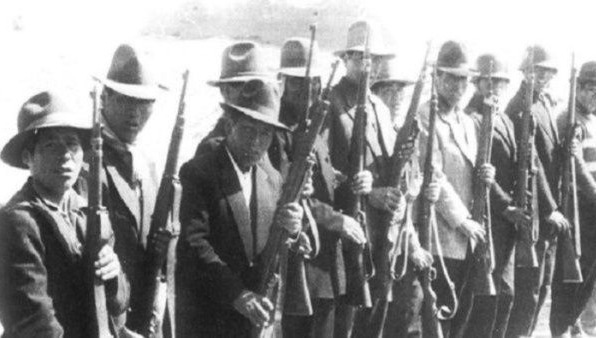
69 years after the Bolivian Revolution, it still serves as inspiration for movements in Latin America. | Photo: LATAM
La Paz, April 16 (RHC)-- This April 9th commemorated 69 years since the triumph of the Bolivian National Revolution, an event marked by the taking of the presidency, days later, on April 16, 1952, by Víctor Paz Estenssoro, who was ousted from power after a coup d'état.
According to the Argentinean economist and journalist Atilio Borón, the Bolivian miners lived heroic days, because after several days of "fierce fighting" they managed to defeat, disarm and dissolve the Army, "watchdog of the mining and landowning oligarchy," as he described it. "Bolivia offers numerous lessons of great utility for the emancipatory struggles waged by our peoples. Its initial achievements were immense, impossible to underestimate," added Borón.
The history of the Bolivian Revolution has many lessons that are still valid today and constituted the second great "change of structures" since the signing of the Act of Independence of Upper Peru. For this reason, on the 69th anniversary of the triumph, we will provide information about its history.
The awakening of the Bolivian National Revolution began in 1951, when the Nationalist Revolutionary Movement (MNR), led by Victor Paz, won the presidential elections of that year.
Unfortunately, the mining oligarchy organized a coup d'état and installed a military junta to prevent the MNR leader, who had to go into exile in Argentina, from coming to power.
"What follows is a growing social and political unrest that translates first into an impetuous mobilization of miners and peasants and, soon after, to what Marxist theory calls a 'duality of powers'. That is to say, a deep crack in the bourgeois state which, weakened by the rebellion of 'those from below', loses its capacity to demand and obtain subordination to its mandates and which, therefore, cannot prevent the emergence of a formidable antagonist, a real, effective power, not formal or constitutional but a constituent power based on the immense popular support of the bloc formed by the peasants and miners in arms", says Borón.
}On April 9, 1952, a massive popular insurrection took place, mainly in La Paz and Oruro. In both places, the Army suffered a defeat and was replaced by militias of miners and peasants.
This was no coincidence, as it had been prepared by members of the MNR since before. Between April 9, 10 and 11 they defeated 11 military units in the streets. This action provoked the collapse of the colonial-feudal system, annihilated the oligarchic State and its partisan and armed instruments.
Those who carried out the Revolution were mostly workers and peasant miners. According to what writer Juan Luis Hernández reported in La Izquierda Diario, the first mining contingents began to descend the slopes of the hills surrounding La Paz.
"They came from Milluni, perfectly organized in groups with a leader in charge, and they brought a weapon that would prove to be lethal: dynamite. As soon as they came across the military checkpoints, they threw the explosive charges at them, the soldiers threw the weapons and fled, the miners took them and advanced."
More than 500 Bolivians died in the confrontations. This bloodshed paved the way for the triumph of a provisional government, led by the MNR leader Hernán Siles Suazo and the most important union leader of the time, Juan Lechín Oquendo.

